
A technical review of the latest processing technologies via
twin screw extrusion
The following is included in this e-tech newsletter:
- Tips to inject sCO2 into the twin screw extruder process section….and why?
- When and how to use gear pumps with TSE processes (and a helpful quick and easy formula)
- Free on-demand webinar: Compounding of bioplastics and natural fiber composites on TSEs
- NPE 2024 Summary - The Race to Success
- Technical article download: Get Better at Swapping Out Your Twin Screw Elements
- Test, don't guess... Develop your path forward in the Leistritz Extrusion Process Laboratory
- Leistritz Extrusion Technology overview brochure
1 Tips to inject sCO2 into the twin screw extruder process section… and why?
Supercritical carbon dioxide (sCO2) can be injected into the twin screw extruder (TSE) process section to facilitate foaming, as well as a process aid for other processes. Regardless of the final product, the design of the injection and cooling mechanisms are identical.
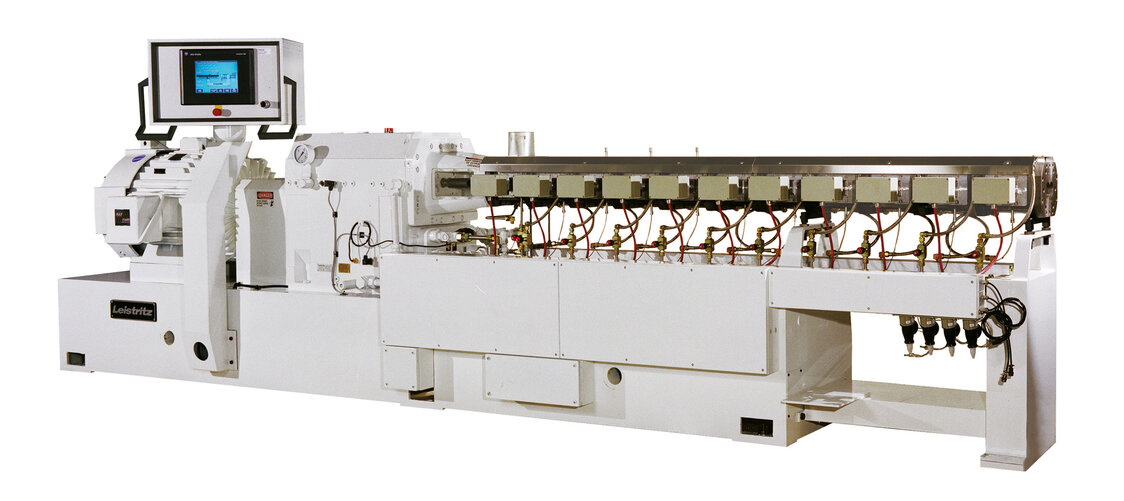
ZSE-60 MAXX configured for sCO2 injection/foaming (no vent)
Atypical TSE barrel and screw designs are required to accommodate the high injection pressures inherent with the injection of sCO2. (and other supercritical fluids too)

TSE screw schematic denoting unit operations for injection of physical blowing agents
Co-rotating screws that are self-wiping are modular and assembled on high torque shafts and rotating screws with mixing elements transmit energy into the process from the motor. In the initial stages of the screw design:
- Polymer/additives are metered into the feed throat and solids conveying, melting and mixing occurs
- Then a dynamic seal is integrated into the design to facilitate high-pressure injection of the sCO2 into distributive mixing elements without blow-back. Barrel flange designs are also modified to accommodate the high-pressure environment.

Close-up: injection mixers and dynamic seal

Foamed synthetic wine corks
Foaming
Screws run filled (pressurized) and pump the melt in a supercritical state and distributive mixing elements perform thermal homogenization. Barrel sections with high intensity internal cooling bores are specified for increased heat transfer.
Common foamed products include foamed sheet, profiles and a variety of packaging products. Life Science applications also use foamed products for fast acting, fast dissolving dosage forms.
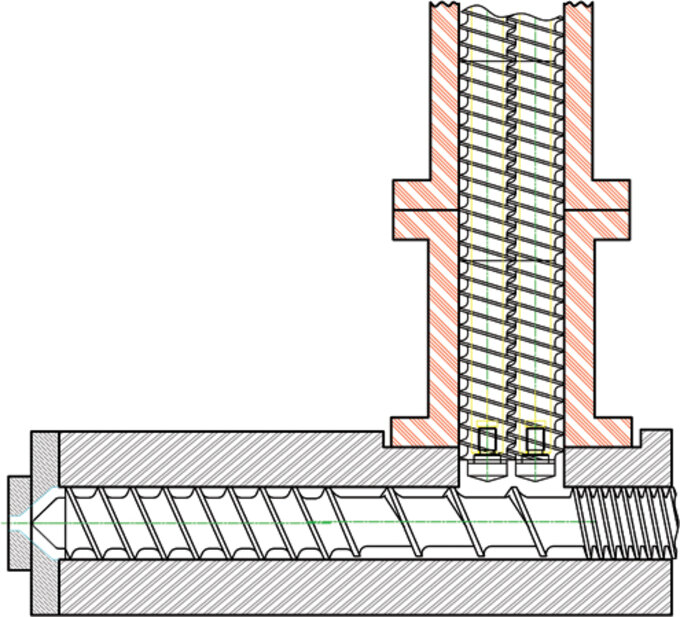
Example co-rotating intermeshing TSE attached to tandem SSE cooling extruder
Note: The heat transfer limitations inherent with TSEs allow successful process up to approx. 200 kgs/hr. To achieve higher rates a single screw “cooling” extruder/pump (or static mixer/cooler attachment) is mated to the TSE front-end for additional cooling. (1000+ kgs/hr)
In addition to foaming, there are other applications that also benefit from sCO2 injection.
sCO2 as a stripping agent
To reduce volatile contaminant levels, sCO2 is introduced into the melt and mixed to create bubbles in rolling pools under vents that burst and create additional surface area that facilitates ultra-fine devolatilization, when assisted by vacuum venting.
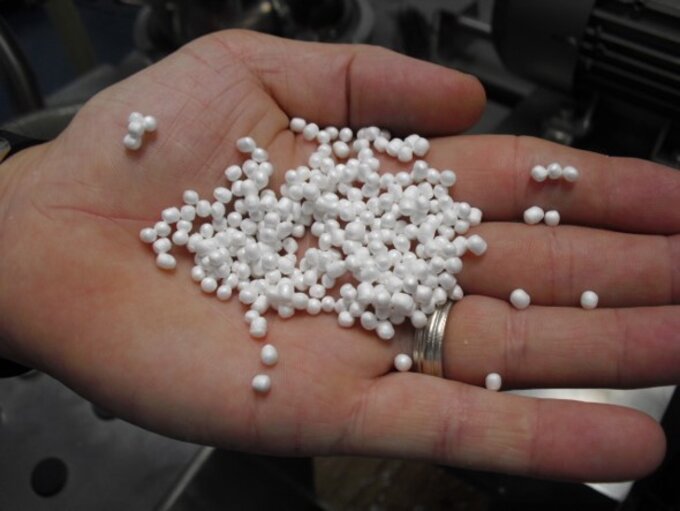
Foamed beads of a pharmaceutical formulation
sCO2 as a plasticizer
sCO2 is also used as a plasticizer, which is particularly useful for processing pharmaceutical polymers to reduce viscosities/ torque to enable heat and shear sensitive active drug ingredients to be processed. Benefits include the enhanced bioavailability of the active ingredient and increased milling efficiencies of the foamed beads. (that improves the mechanical properties of the final tablet)
Devulcanization of tire rubber
The injection of sC02 assists in the conversion of recycled/vulcanized ground tire rubber into devulcanized rubber (and patented by Tyromer Inc.) Tire rubber particles are metered into a TSE and a combination of the plasticizing effects of sCO2 with intensive kneading from the rotating screws results in a devulcanized rubber which can then be successfully reprocessed.
Note: sCO2 capabilities is available in the Leistritz Extrusion USA Process Laboratory
2 When and how to use gear pump with TSE processes (and a helpful quick and easy formula)
A gear pump is a positive displacement device that enables precision pumping of a liquid or melt. Gear pumps are used to inject liquids into the TSE process section, and also integrated into the TSE front-end melt delivery equipment to build and stabilize pressure to the downstream filtration and die system.

To deliver fluids to the TSE process section following componentry is integrated:
- Gear pump (cc/rev TBD) with AC motor/drive (other type injection pump types are available)
- Stainless steel reservoir with lid
- Flexible/braided stainless steel interconnection hose
- Injector assembly with pressure gauge
- Stainless steel stand with drip pan
- Optional load cell for LIW operation or mass-flow meter, heated tank/pump/transfer lines
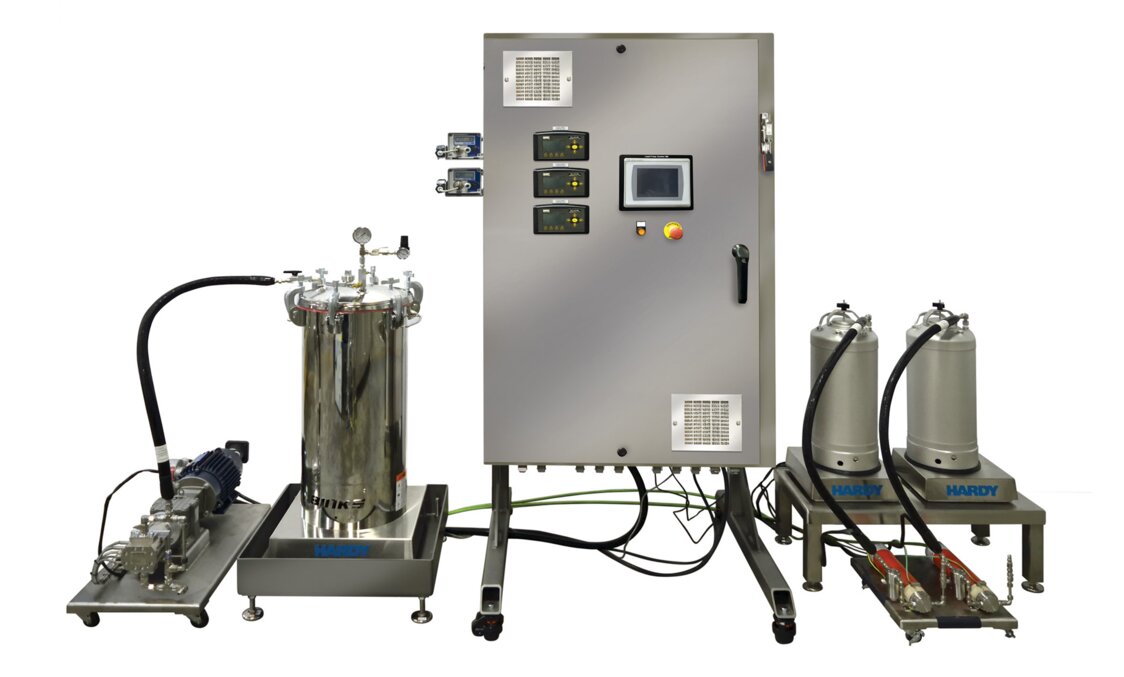
Injection system to meter liquids into a TSE Reactive Extrusion System
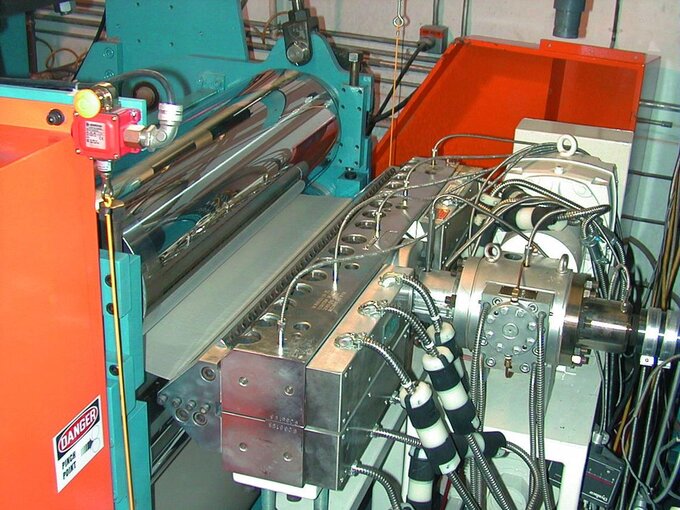
Gear pump and sheet die attached to a ZSE-50 MAXX
Gear pumps are used to make a better, tighter tolerance product, i.e. film, sheet, profile+++. Front-end systems may require elevated pressures to optimize the process, whether it is for ultra-fine filtration or a high pressure die. The inlet/outlet pressure differential (approx. 1000 to 4000 psi) inherent with a gear pump makes it possible for the TSE to operate with comparatively lower discharge pressures (400-800 psi) while isolating the high-pressure pumping task. In addition to melt flow and pressure stability, the ability to set a lower TSE discharge pressure will markedly decrease the melt temperature, resulting in less discharge screws wear and a decrease of thrust on the TSE gearbox.
When a gear pump is used, closed loop process control is integrated into the PLC/HMI logic. The feed system, twin screw extruder rpms and gear pump rpms must all be integrated into the algorithm, which is not always an easy task.
Quick and easy gear pump formula
Whether injecting into or building pressure out, it is important to know a precise rate that’s being metered by the gear pump. The following formula can be used to calculate the GP throughput rate and/or the Specific Gravity of the liquid being injected or the process melt stream.
If the SG is known, plugging in the orange #’s will approximate the achievable rate. If the rate is known but not the SG that parameter can be determined by inputting that # until the formula works.

3 Free on-demand webinar: Compounding of Bioplastics and Natural Fiber Composites on TSEs

Twin screw extruders are the preferred device to mix polymers, natural fibers, and bioplastics. The final product can be pellets, film, sheet, pipe/profile, filaments and/or fibers. Relevant theory, tips and test results will be presented. The following topics will be addressed:
- Continuous mixing of heat- and shear-sensitive bioplastic formulations via twin screw extruders
- Matching twin screw barrel geometries to unit operations
- Comparison of co-rotating and counter-rotating twin screw extruder designs
- Devolatilization theory, techniques, and practices
- Upstream material handling and downstream system considerations
Access this free online webinar: Leistritz Bioplastics Webinar - (Link to YouTube)
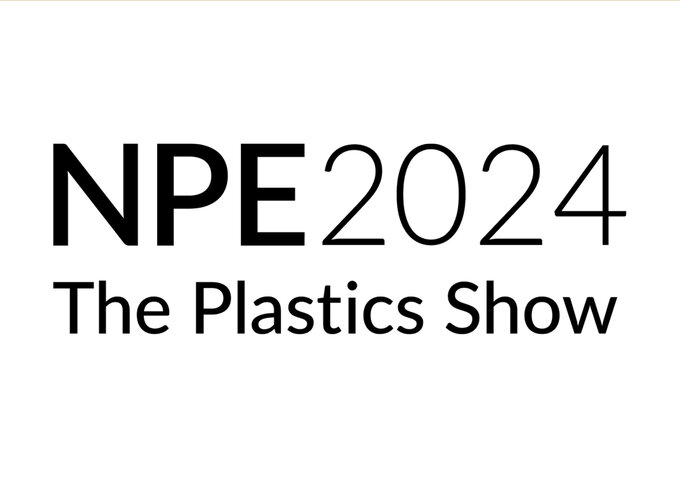
The Leistritz NPE 2024 exhibit.... The Race to Success
4 Summary NPE 2024The Race to Success - There’s no substitute for face-to-face communications!
Leistritz Extrusion will be participating in numerous industry events and Leistritz sponsored workshops for the Plastics and Life Science industries, which are denoted on the Leistritz Extrusion 2024 Calendar.
The highlight of 2024 was the National Plastics Exposition, May 6-10, 2024 in Orlando, FL. The theme of the Leistritz Extrusion exhibit (booth # W6343) was The Race to Success that featured state-of-the-art twin screw extrusion hardware and controls technologies.
Please visit us at any industry event to discuss your project...or just say hi.
5 Technical articleGet Better at Swapping Out Your Twin Screw Elements
Toll compounders process a range of products on the same TSE that may require different screw designs. As compounders move from one job to the next, time is money. Twin screw extruders are designed with segmented screw elements assembled on splined shafts to optimize a given process. When the run ends and it’s time to change the design. Sometimes a complete 2nd screw set is warranted, or maybe changing the elements is viable. How quickly and efficiently either task is carried out has a direct impact on operation efficiencies, and the bottom line.

Example of a screw shaft
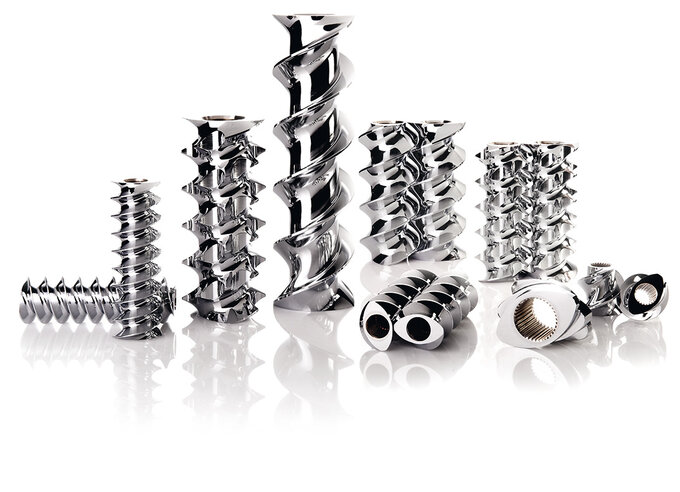
Examples of screw elements
Here are some of the best practices that are described to help expedite this process:
Cleaning and inspection: How to perform an initial cleaning and check for nicks, gouges and tolerances
Rebuilding the screws: Proper positioning of the components and application of anti-seize compound
Reinstalling the screw set: Ensure that the gearbox output shafts and couplings are in the correct position
Must-have tools and parts: A well-equipped facility requires a variety of tools and parts to ensure success
6 Test, don’t guess…..develop your path forward in the Leistritz Extrusion Process Laboratory
The Leistritz Extrusion USA process laboratory is unique in that both pellets and/or film sheet samples are possible. The Leistritz process development laboratory includes:
- 6 twin screw extruders: ZSE 12 MAXX to ZSE 50 MAXX
- Strand, underwater and hot face pelletizing (air quench and water quench)
- 40+ feeders: pellets, powders, fibers, liquids, reclaim+++
- Downstream: film/sheet, tube/profile
- Film/sheet samples from 50 mm to 1 meter in width
- Up to 5-layer coex structures
- Lamination of substrates
- 3D filament extrusion
- Supercritical injection: foaming and stripping
- Devolatilization: 60/1 L/D, multi-stage, atmospheric and vacuum venting
- Multi-stage TSE system setups- string together 2 or 3 extruders in 1 system
Contact us today to discuss your process development project.
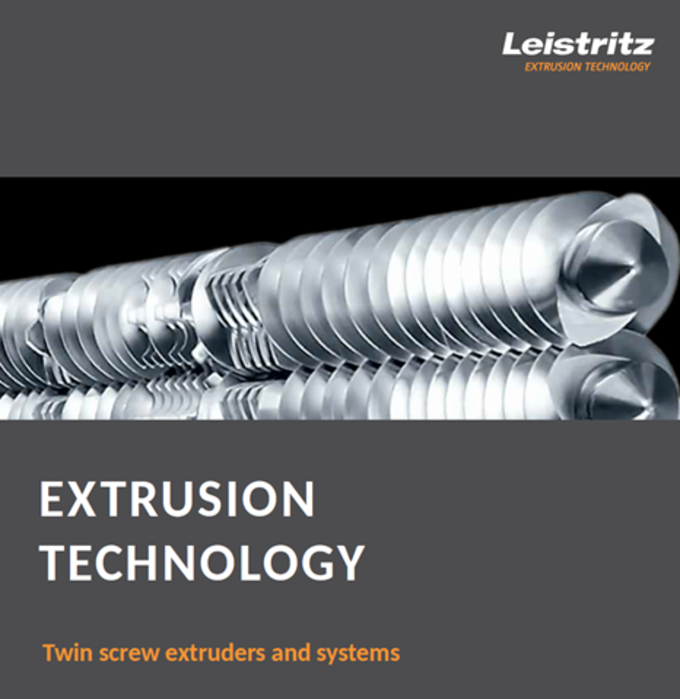
7 DownloadNew Leistritz Extrusion Overview Brochure
A 16-page brochure describes the range of twin screw technologies and services available from Leistritz.
Download the Leistritz Extrusion Overview Brochure
Curious? Please get in touch for additional information. Or anything contained in this newsletter. We look forward to serving you.
Team @ Leistritz Extrusion
Leistritz Extrusion
175 Meister Ave., Branchburg, NJ, 08876, USA
Tel: 908/685-2333
Email: sales@leistritz-extrusion.com
Website: extruders.leistritz.com
We look forward to working together to advance twin screw technologies!